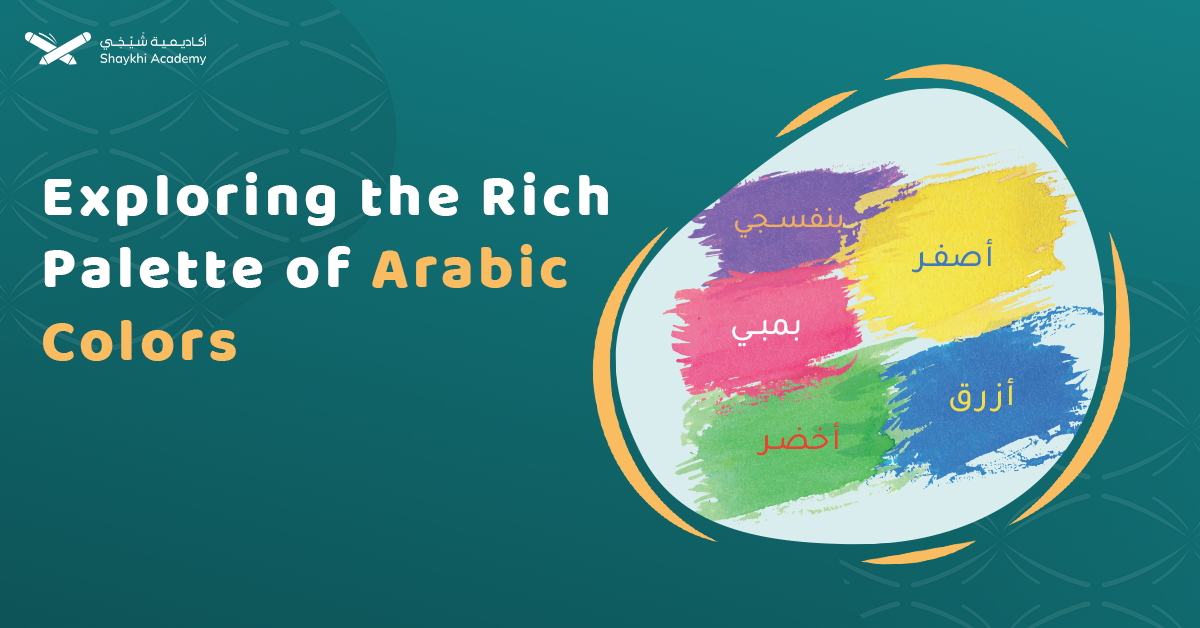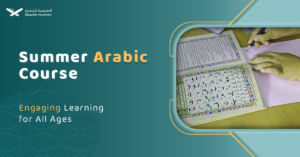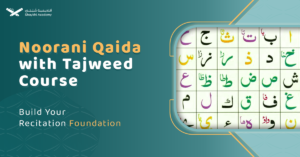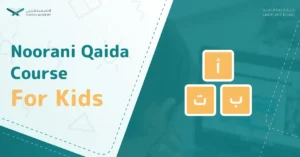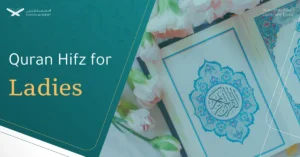Understanding Arabic colors is not only an essential aspect of learning the Arabic language but also a gateway to appreciating the rich cultural and linguistic diversity found in Arabic-speaking regions.
From basic shades like red and blue to more nuanced tones such as turquoise and coral, Arabic colors play an integral role in everyday conversation and cultural expressions.
This list offers a comprehensive overview of common Arabic colors, providing both a linguistic and practical resource for learners and those looking to enhance their vocabulary in Arabic.
What Is the Equivalent for Arabic Colors in Arabic?
The equivalent for “Arabic colors” in Arabic is ألوان عربية (Alwan ‘Arabiyyah). This phrase refers to the different colors used in the Arabic language or in Arabic-speaking cultures, which can be learnt in the Arabic language courses. “ألوان” (Alwan) means “colors,” and “عربية” (‘Arabiyyah) means “Arabic.”
A List of the Arabic Colors:
Whether you’re learning Arabic or exploring the richness of the language, this list of the Arabic colors offers a helpful reference to understand and use colors in different contexts. The table includes a variety of colors, from basic shades like red and blue to more specific tones such as turquoise and coral:
| # | Color in Arabic | Transliteration | Color in English |
| 1 | أَحْمَر | Ahmar | Red |
| 2 | أَزْرَق | Azraq | Blue |
| 3 | أَصْفَر | Asfar | Yellow |
| 4 | أَخْضَر | Akhdar | Green |
| 5 | أَسْوَد | Aswad | Black |
| 6 | أَبْيَض | Abyad | White |
| 7 | بُنِّي | Bunni | Brown |
| 8 | بُرْتُقَالِي | Burtuqali | Orange |
| 9 | بَنَفْسَجِي | Banafsaji | Purple |
| 10 | وَرْدِي | Wardi | Pink |
| 11 | رَمَادِي | Ramadi | Gray |
| 12 | فِضِّي | Fiddi | Silver |
| 13 | ذَهَبِي | Dhahabi | Gold |
| 14 | فَاتِح | Fateh | Light (e.g., light blue) |
| 15 | دَامِغ | Damigh | Dark (e.g., dark red) |
| 16 | لَيمُونِي | Laymuni | Lemon (Yellowish-green) |
| 17 | تِفَاحِي | Tiffahi | Apple (Greenish) |
| 18 | كَحْلِي | Kahli | Navy Blue |
| 19 | عِسْلِي | Isli | Honey Brown |
| 20 | سَمَاوِي | Samawi | Sky Blue |
| 21 | مَرْجَانِي | Marjani | Coral |
| 22 | لَبَنِي | Labani | Milky White |
| 23 | شَامِي | Shami | Lavender |
| 24 | زُرْقَة | Zurqa | Turquoise |
| 25 | فَسْفَسِي | Fasfasi | Aqua Blue |
| 26 | بَاهِت | Bahit | Faded (e.g., faded yellow) |
| 27 | سُوفِي | Sufi | Beige |
| 28 | زَهْرِي | Zahri | Rosy |
| 29 | خَشَبِي | Khashabi | Wooden Brown |
| 30 | بُودِرِي | Budari | Slate Gray |
| 31 | لُؤْلُؤِي | Lu’lu’i | Pearl White |
| 32 | كَرَزِي | Karazi | Cherry Red |
| 33 | سَفْرِي | Safri | Saffron Yellow |
| 34 | قَرْمِزِي | Qarmizi | Crimson |
| 35 | أَوْرَجِي | Awriji | Amber |
| 36 | مِيلَادِي | Miladi | Milady (Color of the Year) |
| 37 | تِسْتَمِي | Tistami | Burgundy |
| 38 | جَزْرِي | Jazri | Pumpkin Orange |
| 39 | فِيرُوزِي | Fayruzi | Turquoise Green |
| 40 | كَارْمِينِي | Karmini | Carmine |
How to Learn Arabic Colors?
Learning Arabic colors can be an enjoyable and rewarding experience, especially when paired with practical application. Many of the below strategies are very effective in Arabic courses for kids. Here are some steps to help you learn Arabic colors effectively:
1- Start with Basic Colors:
Begin by familiarizing yourself with the most common colors like red, blue, green, black, and white. These are the foundation, and once you know them, learning additional colors becomes easier.
2- Use Flashcards:
Create flashcards with the Arabic word for the color on one side and its English translation on the other. Reviewing these flashcards daily can help reinforce the vocabulary.
3- Visual Learning:
Associate colors with images. For example, look at a red apple and learn the word “أحمر” (Ahmar) for red. This method helps create strong visual and mental connections between the colors and their Arabic names.
4- Practice with Everyday Objects:
Label objects around your home or classroom with their color names in Arabic. For instance, “الكتاب الأزرق” (Al-kitab al-azraq) means “the blue book.” This practice helps reinforce learning in a real-world context.
5- Learn the Variations:
Arabic has variations in shades, so it’s important to learn the subtle differences between colors like “light” (فاتح – Fateh) and “dark” (داكن – Daken). Expanding your vocabulary to include these distinctions can enhance your understanding.
6- Use Interactive Language Apps:
Many apps focus on teaching Arabic vocabulary, including colors. Using these apps can help you practice colors in context, like identifying the color of objects in Arabic phrases.
7- Watch Arabic Media:
Watch Arabic cartoons, shows, or videos where colors are frequently mentioned. This exposure can help you learn how colors are used naturally in conversations.
8- Practice Speaking:
Try to incorporate colors into your daily conversations in Arabic. For instance, when talking about your clothes, the weather, or objects in your surroundings, describe them using their Arabic color names.
9- Group Colors by Categories:
Grouping similar colors together can make learning easier. For example, you can group all shades of red together (like crimson, cherry red) and learn them as a set.
10- Regular Review:
Like any language skill, consistency is key. Review the colors regularly to ensure they stay fresh in your memory.
Master Arabic with Expert Instructors: Join Our Online Courses Today!
Ready to take your Arabic learning to the next level? Join our comprehensive Learn Arabic Online Courses at Shaykhi Academy. Our qualified teachers will guide you every step of the way, whether you’re starting from scratch or looking to refine your skills.
Don’t miss the opportunity to master Arabic with expert instructors, flexible classes, and personalized attention. Start your journey today and unlock the power of the Arabic language! Enroll now.
Why Shaykhi Academy?
- Expert Native Tutors: Learn from highly qualified native Arabic speakers.
- Flexible Scheduling: Tailor your classes to fit your busy life.
- Affordable Learning: Access top-quality education at a price that suits you.
- Global Access: Study from anywhere in the world.
Explore Our Arabic Courses:
- Noorani Qaida: Build a strong foundation in Quranic Arabic.
- Comprehensive Arabic Courses: Master the Arabic language, from beginner to advanced levels.
- Fusha Arabic Classes: Delve into Modern Standard Arabic, the key to understanding literature, media, and formal communication across the Arab world.
- Quranic Arabic Course: Enhance your connection with the Quran by learning the language in which it was revealed.
Start Your Arabic Journey Today! Whether you’re just starting or looking to deepen your knowledge, Shaykhi Academy is here to support your journey. Book your free trial now and begin your path to Arabic mastery!

The Conclusion:
By learning Arabic colors, you not only expand your vocabulary but also deepen your understanding of how language reflects cultural nuances and traditions in Arabic-speaking communities.
Whether you are a beginner looking to start learning the language or an advanced learner seeking to refine your skills, knowing the names of colors in Arabic can add color to your language learning journey, both literally and figuratively. By applying these words to everyday objects and conversations, you’ll make significant strides in your Arabic proficiency.
